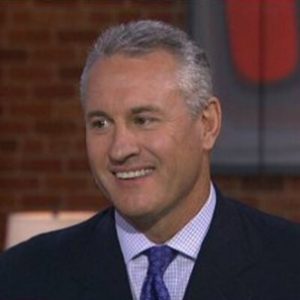How to Strengthen Donor Relationships: Applying Lessons from the Magnetic Marketing Growth Summit
ProActive Content Founder Dan Magill Reports on Why and How Nonprofits Need to Prioritize Donor Relationships
I recently attended the Magnetic Marketing Growth Summit in Denver, and though their emphasis is on marketing for businesses, so many of the principles I learned at this event directly apply to nonprofit marketing as well.

Image by Gerd Altmann from Pixabay
In particular, numerous speakers talked about the importance of customer relationships. For nonprofits, that means donor relationships.
What I’m going to do here is report on what some of the speakers said about customers, and then draw the parallel lessons for what you can do to strengthen your relationships with donors.
And I want to make something clear: Many of these speakers are luminaries in their industries. They are ground-breakers, innovators, and to use one of their favorite terms – renegades, meaning they buck trends that everyone else runs after. Why? Because when it comes to business and marketing, in most cases, if everyone is doing it, it’s probably a bad idea.
So the principles and insights they have given are not just ‘nice ideas’ or things to maybe consider. These are bedrock ideas, founded in decades of experience, layered upon previous experiences of those who came before them.
In other words, this is BIG stuff – not to be ignored.
Okay, here we go. We’ll start with 40-year direct response copywriter Brian Kurtz.
 What Brian Kurtz Said
What Brian Kurtz Said
I’m beginning this list with Brian because what he said in some ways governs everything that will follow.
Brian said, “Everything in business and in life is not a revenue event; but everything is a relationship event.”
Another way to say this is, people don’t stop being people when they interact with a business. If you treat them as numbers, assets, and statistics, they will know it immediately.
Applied to Nonprofit Marketing
In the same way, every time you interact with a donor is not a donation event. But, every interaction with donors is a relationship event.
This is a media-agnostic principle.
Whether email, direct mail, social media, phone, in-person, or even on the radio or TV for that matter, every single communication you send out to donors either weakens or strengthens your relationship with donors.
Do you think about all your donor communications that way? If not, now is a great time to start.
 What Darcy Juarez Said
What Darcy Juarez Said
Darcy is a marketing coach extraordinaire for specific types of businesses. She made several presentations at the Growth Summit. In one, she spoke about ascension. This is the journey certain businesses take their customers through, broken into steps.
This journey can be expressed in four phases:
First, a lead becomes a buyer. Then, a buyer becomes a customer. The customer becomes a committed customer. And the committed customer becomes an evangelical ambassador.
How does this journey take place? And how does it break down?
Darcy answered this first with a question: Do you have happy customers? Here’s how you can know:
“A typical business owner only communicates when they want something. We must build a relationship business.”
A business built upon relationships is one built on trust that is continually nurtured and strengthened. How do you do this? Darcy gave several practical ways, which I will detail when I apply this to nonprofits next.
Applied to Nonprofit Marketing
In nonprofit terms, here is the ‘donor’ journey you want your donors to progress through:
- > A person becomes a first-time donor
- > A first-time donor becomes a repeat donor
- > A repeat donor becomes a recurring donor
- > A recurring donor becomes an ‘evangelical ambassador’
Notice that the final term is the same as the one Darcy used. Why? Because passionate, sold-out, die-hard, loyal customers and donors exhibit the exact same behavior. They tell everyone about you. You are part of their life. They do not consider you a nonprofit organization. They consider you one of their reasons for being, living, and working.
The only thing that limits how much money they give you is their capacity to give. A low-income donor who gives $15 per month, even though it stretches their budget, will give ever-increasing amounts as their income grows.
You don’t have to convince them.
But – you do have to maintain the relationship!
So – do you have happy donors?
Here are five ways Darcy’s suggestions for strengthening customer relationships translate to donor relationships.
-
Acknowledge your donors when they interact with you
This is bigger than thank you letters when people give, though that is an essential part of it. If a donor comments on a blog or social media post, acknowledge them. Make it clear you see them, and that their contribution matters.
-
Help solve problems
This has two sides. First, donors might have problems with something about your organization. Could be as simple as an online donation form that isn’t working. Prioritize finding a solution to their problems.
Second, donors are in the business of solving problems they care about. That’s why they give to your nonprofit. Customers buy products to solve problems in their own lives. Donors give money to solve problems in the world that they care about.
Same behavior – money changes hands. Different motive. But both are about solving problems. Help your donors solve problems they care about.
-
Send handwritten thank you cards
Small handwritten cards in A2 or A7 envelopes are the most human way to thank a donor in writing. See this article for 16 places to thank donors.
-
Send newsletters and updates
Remember Brian’s quote from the start – not every transaction should be about you asking for money. Some communications need to be just that – communication. Tell your donors what’s happening. Keep them in the loop. Share impact stories. Share stories of need. If tragedy strikes, talk about that.
Be in your donors’ lives just like a distant relative. Never stop communicating.
Some nonprofits worry about sending too much communication, be it by email or in the mail. If every single email and printed letter is asking for money, then yes, something isn’t right. But not because you’re sending too much. It’s because you’re treating your donor like a source of revenue and not a person who cares about solving a problem.
-
Send gifts!
You send friends and relatives gifts. Send your donors gifts too. This could be to thank them for a specific donation, what direct mail people call a premium. It could also be to initiate the relationship by using a gift to say ‘hello’ and ask them to give to your nonprofit.
There are many more ways to sustain your donor relationships, but if you did just these five, you would transform the role your nonprofit plays in their lives.
 What Dr. Jamie Reynolds Said
What Dr. Jamie Reynolds Said
Dr. Reynolds is an orthodontist who has revolutionized his practice, in part by bridging marketing with the patient experience. It’s all about establishing a relationship with human beings, rather than booking a patient in the computer.
Dr. Reynolds asked this question of the listeners, many of whom own various service-oriented practices like his:
Who is at the center of your business?
Is it you? Or is it your customers or patients?
He gave the example of having patients fill out tons of forms with all kinds of information when they come into the office. Everyone hates doing this. It adds 10-20 minutes to the length of time they have to spend in their appointment.
Far better than that is making it possible for the patient to fill out their information using an online form before they arrive. You see, it’s a service upgrade because it places value on the time the patient has to give up to come in, but it also saves time and money for his team. Everyone wins.
Beyond that, he offers ‘same day service.’ Patients can come in, and walk out the very same day with braces already in place. Amazing.
And, Dr. Reynolds addressed a common question he gets: “Do you take my insurance?”
This is code language. What they’re really saying is, “I want to do business with you but have a question or concern I need addressed.”
What’s the wrong way to answer that, even if you don’t take their insurance? “No.” That’s a terrible answer. Instead, explain to them how orthodontics get paid for. He has a whole teaching about how to do this that I’ll spare you from.
Finally, Dr. Reynolds delivered this great line: “Do not treat your team as liabilities on your P&L statement. Treat them as assets, and invest in them.”
He was talking about employees, and we could apply that to nonprofit employees as well. But let’s apply all this to donor relationships.
Applied to Nonprofit Marketing
Your donors are not sources of revenue or boxes in a spreadsheet. They are partners in solving problems through your organization.
Do you see how thinking of donors in this way will affect so many of your other processes, just like it did in Dr. Reynolds’ orthodontics practice?
Who is the center of your nonprofit?
Is it you? Your team? Or is it your donors?
It should be your donors.
Can you offer a ‘same day service’ equivalent to donors? One way is to frame the problems you’re solving in immediate, specific terms. Don’t ask donors to ‘fight hunger.’ Ask them to feed a specific hungry family. Instead of ‘same day service,’ it’s ‘same day impact.’
We solved a real problem, today. We fixed something. This is how donors think. This is why people gave over $700,000 back in the 1980s to pull Baby Jessica out of a well, something we wrote about in an earlier ProActive Content blog.
Another speaker at the Growth Summit said the same thing in a different way:
“Help them be better at whatever they care about, and you will also become better.”
For nonprofits, help your donors solve problems they care about, and your nonprofit will grow.
 What Adam Witty Said
What Adam Witty Said
Adam Witty is the CEO of ForbesBooks and Advantage Marketing, which puts on the Growth Summit, among many other things.
He differentiated between how most companies operate, and how yours should, when he warned not to look to your industry for guidance on how to grow.
“They look at cost to deliver” when deciding how much to invest in a particular action. Instead, you should “set price based on the value of what you do that it brings to your customers.”
Applied to Nonprofit Marketing
If you are faced with the question of how much to invest in something, what are your decision-making criteria?
Do you begin by asking, “How much will it cost?”
That’s the wrong question. Of course cost matters. But it should not be the first question. The first question is, how does this strengthen or weaken our relationship with donors? How does it make it easier or harder for donors to know how they can help solve problems they care about?
Do you see the difference in perspective?
This will change…everything, at your nonprofit, if you apply this way of thinking across all your systems.
 Last One – What Steve Sax Said
Last One – What Steve Sax Said
Steve Sax played professional baseball for 13 years, including winning two World Series and Rookie of the Year. He is now a motivational speaker, among many other things.
He told an incredible story:
As a rookie for the Dodgers in 1981, he was sitting on the bench a lot. One day, they were playing against Don Sutton, one of the most fearsome pitchers of his day. He was hurling a no-hitter against the Dodgers, and it was the bottom of the ninth with two outs.
Down 4 to 0, the Dodgers had no chance to win.
Steve told the story so well, but here’s the nutshell. In one of his first-ever major league at-bats, he got into the game as a pinch hitter right at the end of the game. Again – a no-hitter – something pitchers live to achieve at least once in their careers.
Steve hit a home run. His team still lost of course, 4 to 1.
But after the game, after losing his no-hitter to this nameless rookie, Sutton goes into the Dodgers’ dugout and taps Steve on the shoulder. The fans had thrown the ball back on the field to express their disappointment about losing the no-hitter.
He congratulates Steve, tells him what he did was amazing and that he’ll be a great player one day, and then gives him the home run ball.
Steve credits Sutton with a huge boost of confidence from this moment, that marked him for life.
Applied to Nonprofit Marketing
Don Sutton demonstrated incredible sportsmanship by congratulating Steve Sax.
How do you congratulate your donors when they do something great and amazing?
Giving money and getting nothing in return – that’s amazing!
If you want stronger donor relationships, take the lessons from these Growth Summit presenters.
Thank your donors.
Send them gifts and handwritten cards.
Help them solve problems they care about.
Help them be better at what matters to them.
Put them at the center of your nonprofit.
Value them.
Treat your donor relationships the same way you would like to be treated when you are part of something. When you do that, your nonprofit will grow, faster and stronger than any other way.
Want more content? Get weekly nonprofit fundraising and copywriting tips, strategies, and motivations in the ProActive Insights newsletter.


